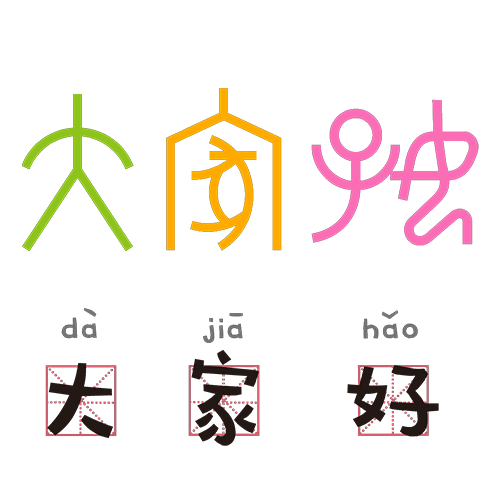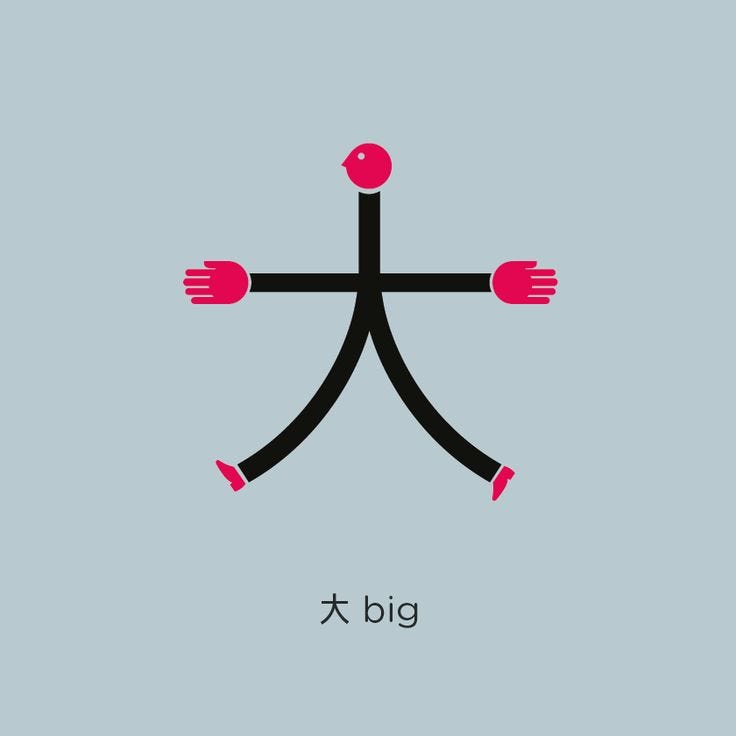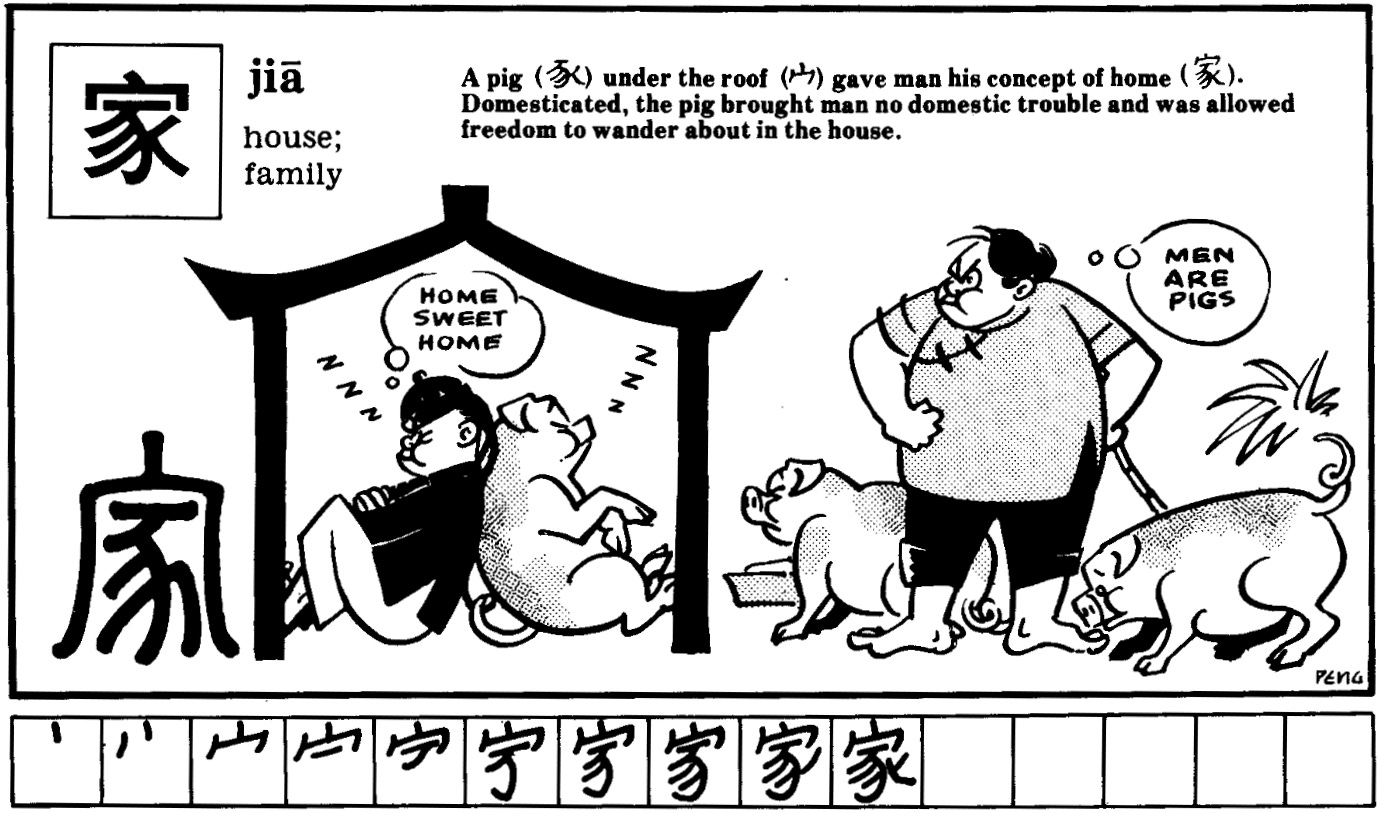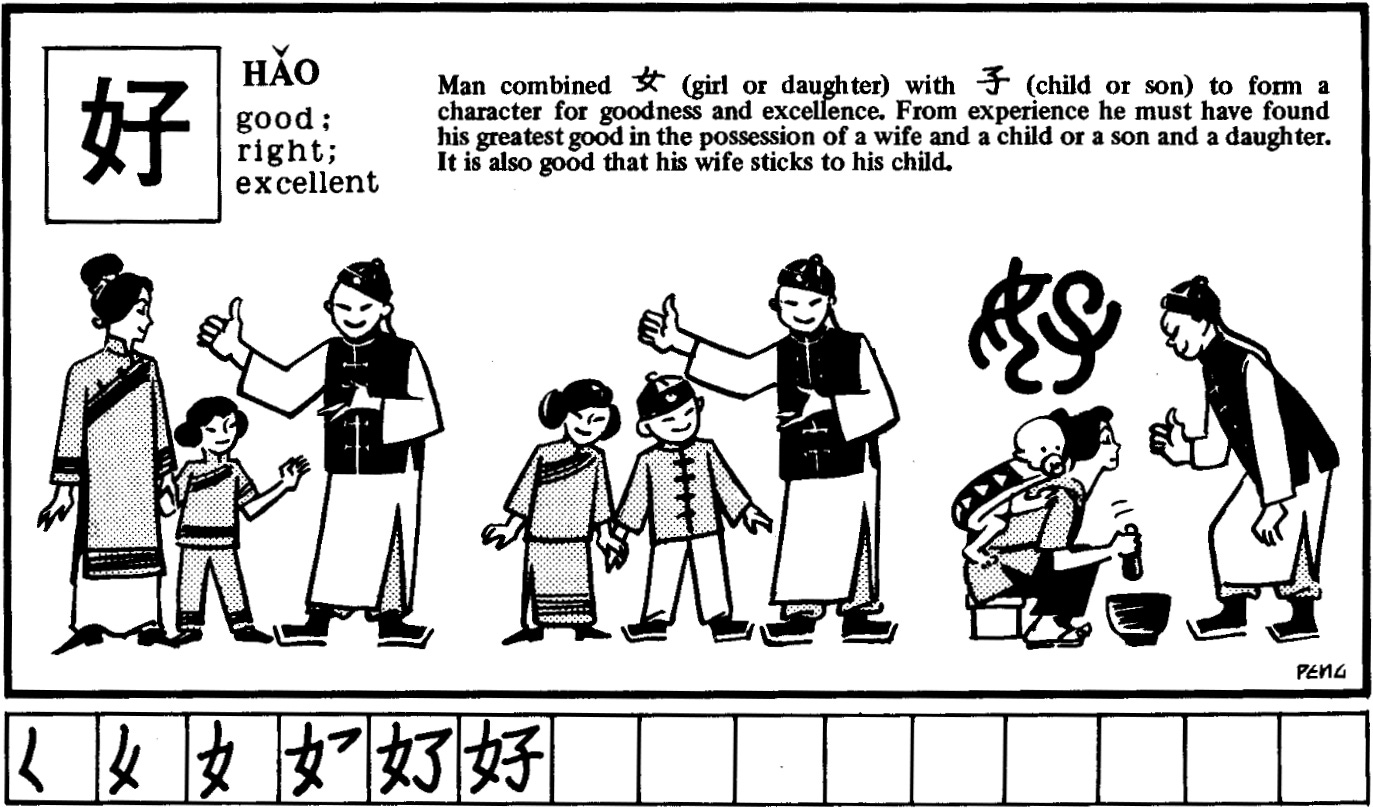Learn Chinese Like an Engineer (Part 3)
Memory athletes use a technique called "The Memory Palace" and it is a piece of the solution to your language proficiency fast track.
大家好
…
Wow! Hold your horses. Was that too brutal? Not as much as you might think.
Perhaps your brain immediately tuned out at the sight of something unfamiliar, like we tend to immediately change the radio channel when accidentally hopping on a Middle Eastern music station. Their use of microtones1 or musical notes that do not abide by the Western C-D-E-F-G-A-B (Do-Ré-Mi-Fa-Sol-La-Si) provokes strong dissonance, as our ears are simply not trained to interpret those. It sounds off and feels wrong despite this “foreign” scale being richer than the one mentioned above. It’s as if those working exclusively with whole numbers were introduced floating points. It must have felt like the scene from Steven Spielberg’s “Close Encounters of the Third Type”, where aliens introduced humans to their five-note tonal vocabulary.
But I can guarantee that you’re not only already equipped to understand what’s written but, with the right approach, weeks later, will still remember how to say “Howdy, y’all” in Chinese: 大家好。
大家好
Hello, everybody
大家好, pronounced “dàjiāhǎo” (no need to try to pronounce it yet), means '“Hello, everybody”.
Although it feels like a blob of random lines, the meaning will emerge if we do what we’ve discussed in the second part of this series of articles on learning Chinese like an engineer: dissect a complex whole into a series of smaller chunks: divide and conquer2.
Let’s split the phrase “hello, everybody” into its parts: “everybody” and “hello” (Chinese do it in this order).
大家
Everybody
dàjiā means “everybody”. Although there are different ways to say “everybody” in Chinese, this one addresses all the people currently present or, to remember it even better, those “in dà house”.
To understand it well and remember it, we should dissect it further.
大
Big
This one is straightforward to understand and remember.
人 (rén) means “person”. If you add a stroke like 一 (yī), you’ll get 大, a person spreading its arms to say “thaaaat big” .
Mandarin Chinese is based on vivid imagery and pictograms, like above. You’ll never forget that glyph, even though you just learned it.
家
Home
This one is not as straightforward, but it is still easy to remember, at least partially.
Like the previous glyph, we’ll divide it into its components: 宀 (mián), “roof” (of a house) and 豕 (shǐ) “pig”. “Home” is, therefore, when a “pig is inside, under the roof”3.
This explanation is often given to those who begin learning Chinese, and like many etymological theories based on evidence from thousands of years back, the traces get cold. There’s a fair bit of speculation.
For example, many believe that the animal depicted initially was not a pig but a cow or an ox. However, the glyph evolved differently due to the pencil or carving corruption4. Look at the evolution of the word “home” below. We begin with an animal that looks much more like a bovine than a pig. The original pig character was quite different, depicting a male pig with an emphasized reproductive organ.

It is important to remember that we’re not trying to dig out the ultimate truth. Instead, we’re trying to learn a foreign language as efficiently and quickly as possible. Engineers take pride in being lazy. Bruteforcing a problem, such as rote memorisation, is considered “mauvais ton” and generally indicates a wrong approach. Therefore, we’re after the most vivid imagery, like the one used by memory athletes called “The Memory Palace”5, which we’ll discuss in another issue. If the mental image of a pig ambulating in your living room feels (and smells) more vivid, go with that, as it’s a better “mnemonic glue” for you.
好
Good
By now, you’ve noticed this remarkable Lego-like aspect of Mandarin Chinese. We use lower-level components to build progressively more complex constructs. In the engineering parlance, we call it CDD, or Component-Driven Development.
Good is 女 + 子, or “woman/girl/daughter” + “son/child”.
Let’s imprint these basic building blocks in our memories forever, shall we?
Here comes another bifurcation of interpretations. One is more plausible, and the other is more politically correct. Choose the one you can tolerate, or that provokes the most emotions. Forget about politics and gender inequality momentarily; we’re trying to learn as many new words as quickly as possible.
Variant 1: The Plausible Story
In ancient China, a woman (女) was only considered good if she gave birth to a boy (子). So, 女 + 子 = 好.
Variant 2: The Acceptable Story
Putting It Back Together
In the previous part of this series, we discussed the importance of dividing a complex problem into smaller, more fathomable ones and reassembling them to construct the entire solution.
Now that we’ve processed all of the “Hello, everybody” components, it’s time to put them back together. This is an optional step but a great cherry on the top. To permanently solidify our knowledge of how to write “hello, everybody” in Chinese, let’s write a micro-story for ourselves that is so vivid we’ll have a hard time forgetting it.
Notice the sequence of words being precisely the sequence of 大家好.
“From afar, I saw my neighbour. That big guy stretched his arms wide to let me know there was danger ahead. He said there was a pig inside my house, and my good daughter and son were stuck in the backyard.“
If you came that far, I’d argue that you’ve already reduced FSI’s (The Foreign Service Institute) projected time required to master Mandarin. You just learned a few essential elements that’ll allow you to understand more complex constructs from now on, such as 大好 (very good) or 回家 (to return home).
But great engineers push it as far as they can, and there’s still more we can do to increase language acquisition speed by up to 70%.
In the next issue, we’ll visually connect the dots of knowledge we’ve acquired so far.
https://en.wikipedia.org/wiki/Microtone_(music)
https://www.linkedin.com/pulse/divide-conquer-help-your-startup-navigate-unknownpart-alimoekhamedov-jsepc/
Peng, T. H. Fun with Chinese Characters 1: The Straits Times Collection 1. Master Communications, Inc.
https://chinese.stackexchange.com/questions/9934/%E5%AE%B6-why-is-a-home-a-place-for-pigs
Foer, J. (2011). Moonwalking with Einstein: The Art and Science of Remembering Everything. Penguin.








